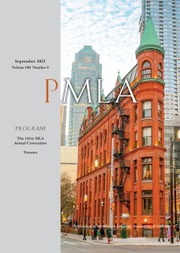No CrossRef data available.
Article contents
Abstract
Ecocritical scholars and environmental scientists contend that the earliest detectable signs of anthropogenic global warming manifested as extreme fluctuations in global weather patterns and can be traced back to the 1930s. While modernist scholars have been hard pressed to find evidence of an ecological consciousness among canonical modernists during this decade, this essay demonstrates that Gertrude Stein left a copious and critical archive of climatic change in Everybody's Autobiography, published in 1937. In this lesser known “autobiography,” Stein recounts spectacular and mundane environmental upheavals while criticizing the West's epistemological dissociation of the weather from world events. Moreover, Stein offers an extraordinary reflection on modernity's “eternal” dependence on fossil fuels. By historically situating Stein's numerous weather reports within the political, scientific, environmental, and media discourses of the 1930s, this essay offers a portrait of Stein as an important cultural actor within the broader historiography of modern climate science.
- Type
- Essay
- Information
- Copyright
- Copyright © 2024 The Author(s). Published by Cambridge University Press on behalf of Modern Language Association of America


